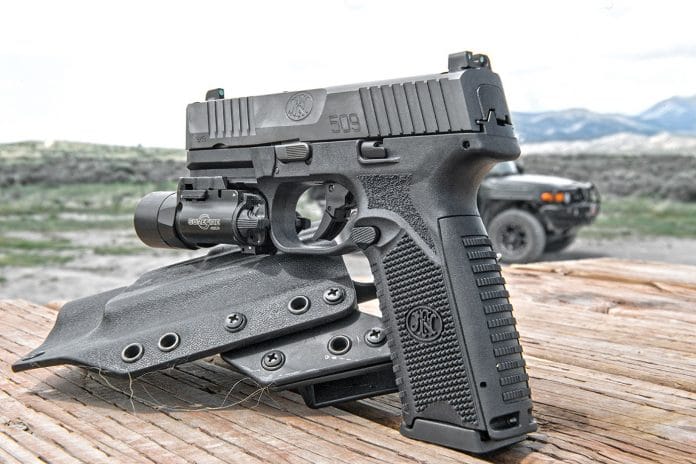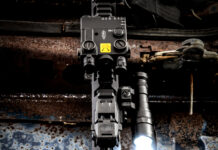By Dave Bahde
Photos by Dave Bahde and courtesy of FN America
The new FN509 is a shining example of contract trickle-down benefits to the commercial market
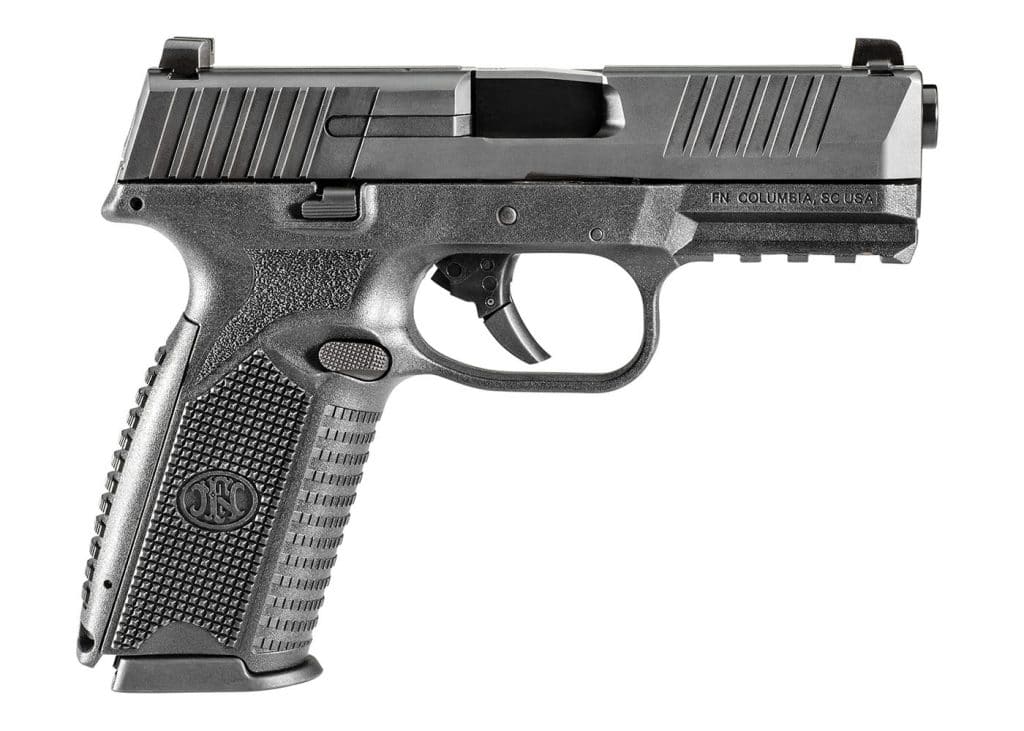 One of the bi-products of competitive military contracts is the weapons not chosen usually wind up hitting the commercial market. Most contracts are so lucrative it drives major manufacturers to compete. Many features requested by these competitions are valuable to all. The Army’s MHS (Military Handgun Selection) pistol contract is a perfect example, bringing some very solid pistols to the commercial market this year. The 9mm FN America FN509 ($649) is the second pistol either inspired by or built for the MHS testing in the last month. Given the requirements, they are solidly built, withstanding rigorous testing protocols including mind boggling round counts. Ergonomics are improved along with weight and size. Even with an insanely political process with some questionable specifications, the end products are well suited to use in the most difficult conditions. The expense of making these changes otherwise tends to be cost prohibitive, so it’s not something you will see outside contracts like this. While it’s not always beneficial to the manufacturers, it often is for the rest of us, and this FN509 is a solid example.
One of the bi-products of competitive military contracts is the weapons not chosen usually wind up hitting the commercial market. Most contracts are so lucrative it drives major manufacturers to compete. Many features requested by these competitions are valuable to all. The Army’s MHS (Military Handgun Selection) pistol contract is a perfect example, bringing some very solid pistols to the commercial market this year. The 9mm FN America FN509 ($649) is the second pistol either inspired by or built for the MHS testing in the last month. Given the requirements, they are solidly built, withstanding rigorous testing protocols including mind boggling round counts. Ergonomics are improved along with weight and size. Even with an insanely political process with some questionable specifications, the end products are well suited to use in the most difficult conditions. The expense of making these changes otherwise tends to be cost prohibitive, so it’s not something you will see outside contracts like this. While it’s not always beneficial to the manufacturers, it often is for the rest of us, and this FN509 is a solid example.
FN509—The Same But Different
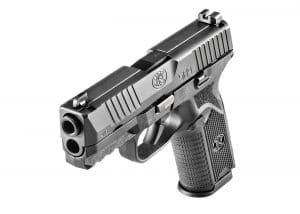
The FN509 is a polymer-frame, striker-fired, double-action-only pistol with a 4.0-inch barrel, two 17-round magazines and an empty weigh of 26.9 oz. Having used the MHS-winning SIG P320 since it came out, and having just completed testing the Beretta APX, this is the third pistol inspired by or based on the MHS I’ve tested in the last few months. Each is a bit different meeting what they perceived as the needs of the user. All are striker fired, but features differ. FN America started with their FNS compact making changes as needed, first to meet the contract, then reaching out to the law enforcement and concealed carry world.
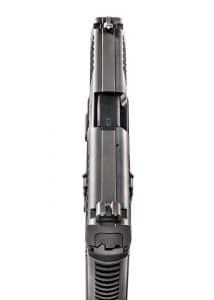
The slide has been modified to include aggressive cocking serrations and rugged sights designed for use during unconventional reloads or drills. The rear sight makes it easy to run on your belt, boot, or other field expedient item. A track of sort sits atop the slide allowing for fast sight alignment. Texturing on the grip is best described as multi-faceted. There are ridges, dots, larger cuts, and typical stippling high on the grip for your off hand. The combination locks your grip in place with or without gloves. Adding a cut to the bottom of the grip allows access to the new magazine floor plate. Interchangeable grip inserts (two total) let it fit most people’s hands. Ambidextrous magazine releases are longer, sit a bit higher, and are nicely stippled. The bore axis is about as good as it gets without your strong hand stopping the slide, with a beavertail to settle the web of your hand into.
Using a captive double recoil spring makes for soft shooting, while the robust external extractor insures proper extraction and ejection. It also means the 509 will probably outlast most owners. FN America is of the mind that most commercial and LE customers will never replace anything on this pistol. Time will tell for sure, but it was certainly designed with that in mind. Take down is as simple as it gets: Make the gun safe, point it in a safe direction and lock the slide to the rear. Rotate the take down lever forward, release the slide, press the trigger and remove the slide. Remove the recoil spring and barrel and you are ready for cleaning. Reverse the process to assemble. Not sure a pistol gets more user serviceable.
How Does It Fit?
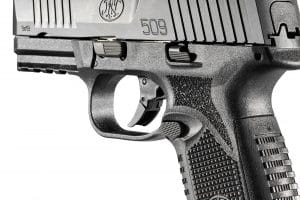
If required to characterize this pistol in one word, I’d call it a “workhorse”. It’s all about function, with aesthetics secondary. Call it a working person’s pistol. For many the stippling and grip treatments will be overly aggressive; for me they were perfect. I’ve carried and deployed weapons in the snow, mud, and muck, and useless cosmetic texturing is well, useless. Trying to properly grasp a smooth grip frame with wet hands is a pain, and holding on during rapid fire is problematic at best. Aggressive treatments lock you into place better. Add gloves (especially wet leather) and your grip is rock solid. Slide serrations are more aggressive for the same reason—use not cosmetics. Some will find it “uncomfortable,” but that’s just part of the equation. Carry pistols to me are fighting tools, not comforters. You will need to adjust accordingly.
















